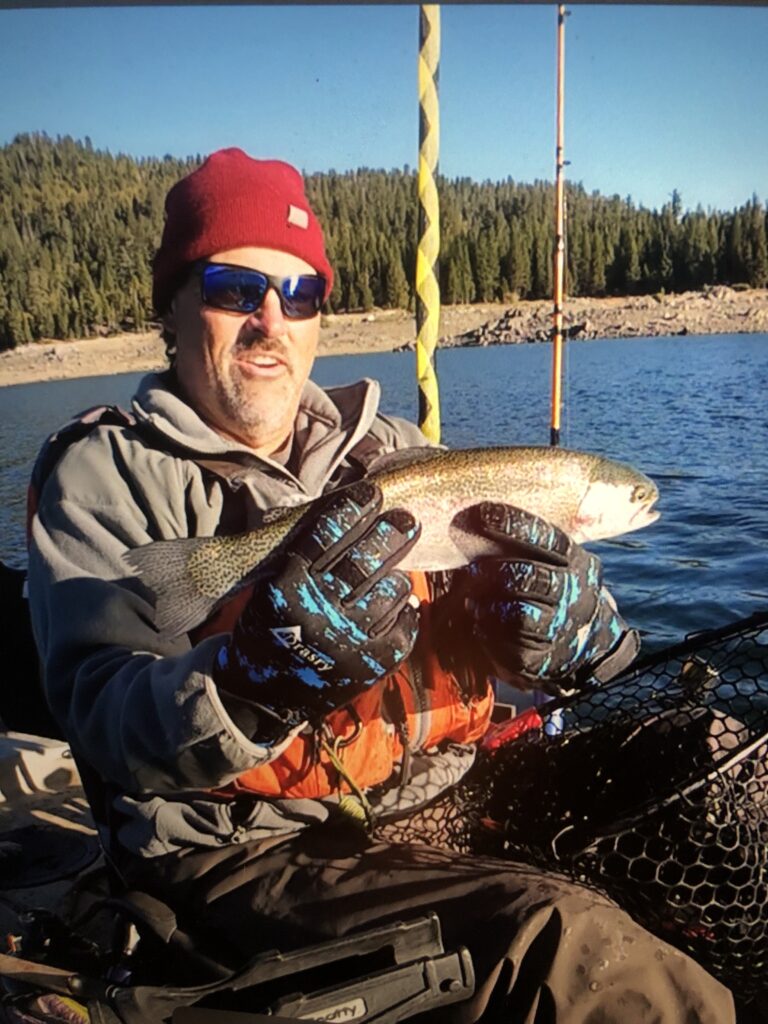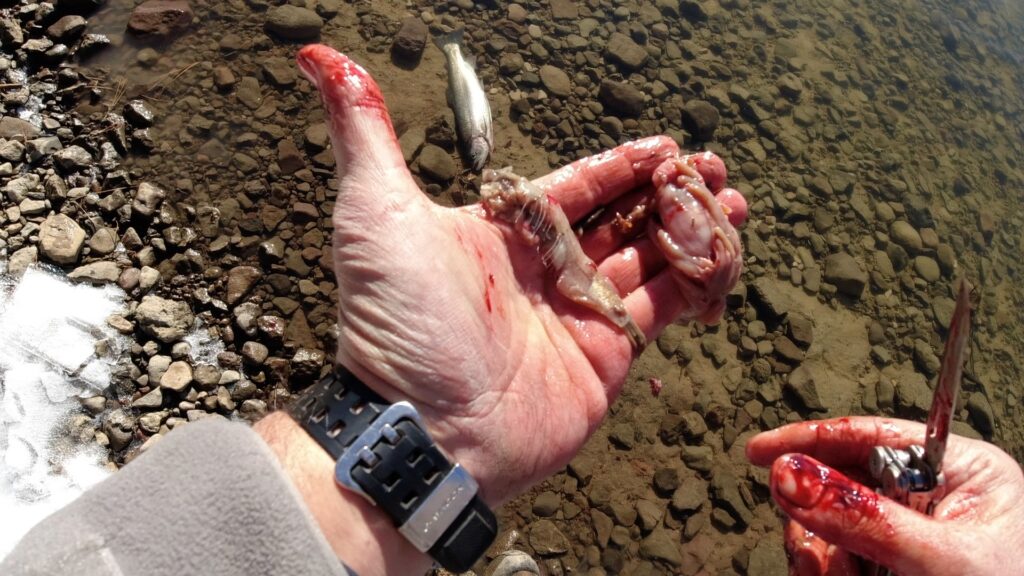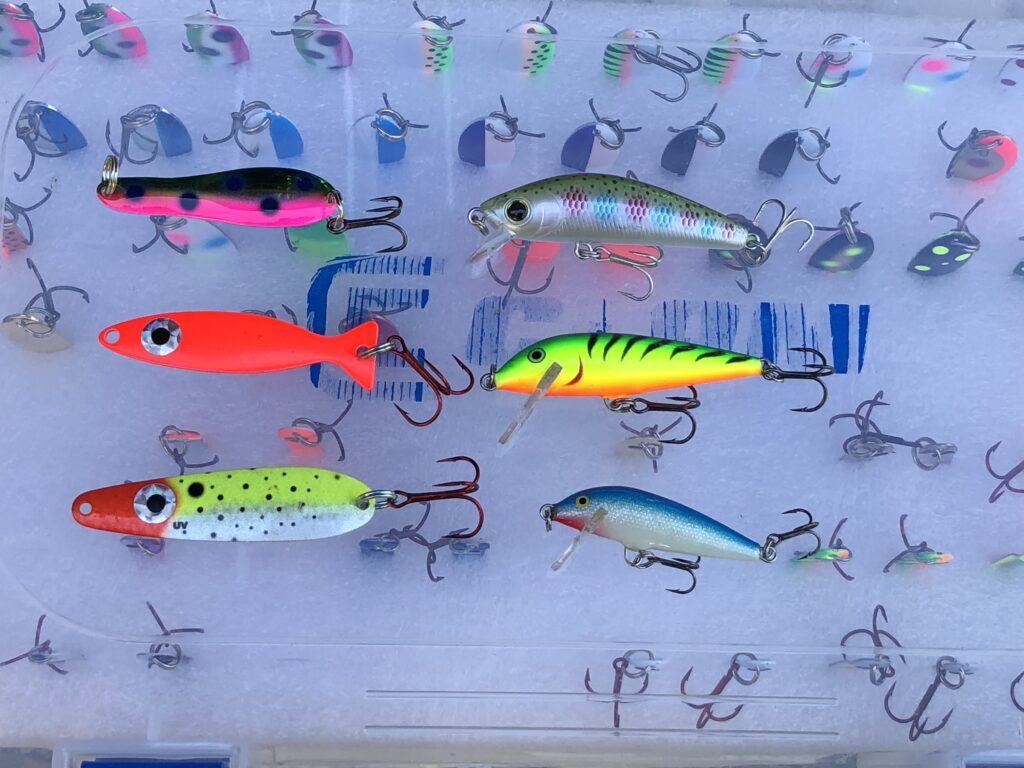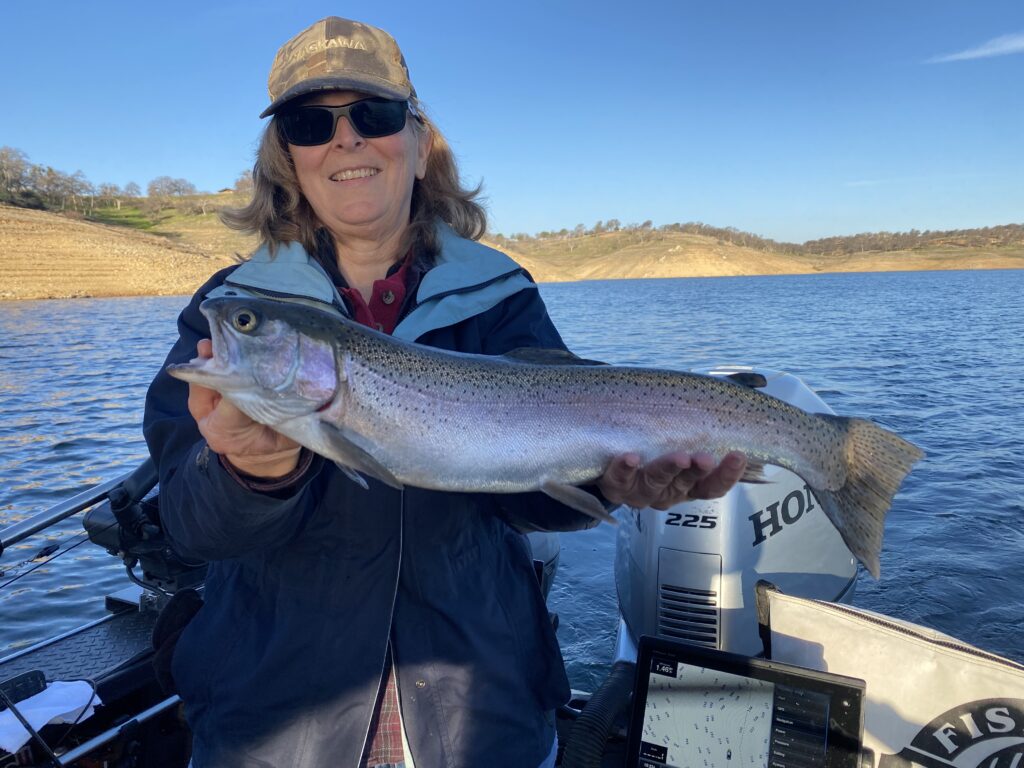Fall Is Around The Corner: Here’s How To Prepare For Autumn Trout Frenzy
The following appears in the August issue of California Sportsman:

By Cal Kellogg
Here in Northern California, we are blessed with the opportunity to catch trout all year long, but at no time is the action more exciting than it is during the spring and fall.
During spring trout are recovering from the lean winter months and are eager to feed. During the fall the situation is similar, with trout feeding aggressively in preparation for the tough winter months to come. It is the aggressive nature of the trout and their zeal to feed that makes spring and fall the prime times of the year for trout trollers as well as bank anglers.
As I sit here at my computer, July is giving way to August, days are getting shorter and fall trout action is right around the corner.
The first point I should make is that the actual beginning of the fall trout bite is influenced by several factors, but water temperature is the central issue. Just because the calendar says it’s early September or early October, it doesn’t mean you can count on encountering red-hot fall trout action, especially if you are fishing at a low-elevation lake.
As a general rule of thumb, the fall trout blitz won’t begin at any given lake until the surface temperature dips into the middle to lower 60s. Trout will actively feed and chase lures near the top of the water column once the surface temperature hits the 60s; the action will only intensify until the surface temp dips to the 50-degree mark. Sure, you can catch trout in water that is below 50, but in most cases the trout will be lethargic and the action slower.
Naturally high-elevation lakes cool faster than low-elevation reservoirs, and as a result the trout fishing at high-country impoundments heats up earlier.
Having established the surface temperatures that coincide with productive fall fishing, let’s look at the best lures and strategies for targeting fall trout. Conventional wisdom dictates that slow trolling is the best approach for hooking trout, because all trout and especially large trout like to burn as little energy as possible in obtaining a meal. Certainly, this is true at times, but during the fall there are other factors at play too.

FOR STARTERS, TROUT HAVE a sense of urgency when it comes to feeding in the fall, because on an instinctive level they understand that there is a finite amount of time before dropping temperatures bring the fall feeding foray to an end.
From that point until the water temperature rises in the spring, the trout will have to rely largely on their fat reserves to survive. As a result, fall trout are aggressive strikers as they try to pack on as much weight as possible with winter looming.
Slow trolling will certainly take these aggressive fall fish, but fast trolling and large lures will draw more strikes and enable you to hook larger trout than you would while trolling slowly.
Most of the time in most lakes, fall trout will be feeding on baitfish, which should be reflected in your lure selection. If your goal is to tempt a large trout, your best shot at success comes in the form of fast-trolling medium to large baitfish imitations. This means spoons, trolling flies and minnow plugs will be your go-to baits.

Starting with spoons, there are only a few spoons on the market that have both the 2.5- to 3.5-inch size that appeals to large rainbows and browns and the ability to be trolled at a brisk 3 miles per hour.
While I’m surely not familiar with every spoon on the market, I’ve only found a handful out of the dozens I’ve tried that have both a long, slim profile and the ability to run in the 3-mph range. Thomas Lures Speedy Shiner, Mack’s Lure Magnum Hum Dinger, Catch America’s Speed Spoon and Trinidad Tackle’s Optimizer meet these specs.
The Speedy Shiner comes in 2.5-, 3.25- and 4-inch sizes and is available in more than a dozen different colors. Nickel, red/gold, blue/white and watermelon are tried-and-true favorites.
Hum Dingers are available in 1/8- or 1/2-ounce sizes. It’s the 1/2-ounce model that you want. For the best results pick up a few in red/brass and chrome/blue.
Speed Spoons weigh in at a 1/2-ounce and are about 3 inches long. The Speed Spoon comes in a wide range of colors, with minnow finish being the favorite of many trollers.
Optimizer Spoons range in size from 3 to 6 inches and can be trolled up to and beyond 4 mph. The Captain America and Metallic Watermelon Optimizer patterns are favorites of mine.
Moving on, trolling flies are the most overlooked trolling bait on the West Coast trout fishing scene. Big fish eat smaller fish, and trolling flies do an outstanding job of mimicking a panicked baitfish.

MANY FOLKS BELIEVE FLIES must be trolled slowly, but that is simply not true. I often run Arctic Fox Flies and Catch America Metal Heads right next to Rapalas and Speedy Shiners when trolling at 3 mph, and I consistently hook fish on the flies. Flies come in a lot of colors.
In general, I think dark over light patterns do the best job of imitating baitfish, but I always have some bright-colored flies on hand too.
Minnow plugs in the 3- to 5-inch range are the other lures you’ll need. The floating Rapala minnow is the lure against how all other minnow plugs are measured. They’ve been catching big trout for decades and are still the first lure I grab when big brown trout are on the menu. Yet these days the Rapala has plenty of competition from other minnow plug manufacturers, including Yo-Zuri and Lucky Craft.
Minnow plugs, whether you choose Rapalas or baits from another manufacturer, come in a long list of colors, but you don’t need a whole lot of variety. This is a blessing since minnow plugs tend to be pricey.
If you only carried minnow plugs in rainbow trout, black over silver and firetiger, you’d be ready to face 95 percent of the challenges commonly encountered out on the water. You’ll want to employ the rainbow trout and black over silver models when water clarity is good and the firetiger units when the water is stained or cloudy.
A lot of anglers ask me if I upgrade the hooks on my trout lures. In some cases I do, but in reference to the lures I’ve recommended in this piece, I’ve always found the factory hooks to be needle sharp and reliable.

NOW THAT WE HAVE a selection of lures in hand, it’s time to hit the water and consider how best
to fish them. In the fall, trout that had been locked into the cool water of the thermocline zone all summer can once again move about the lake freely. Cool fall temperatures chill the surface temperature of lakes and reservoirs. Eventually the thermocline disappears as the water attains a common temperature from the top of the water column to the bottom. Based on temperature alone, trout could be scattered throughout the lake across a variety of depths during the fall, but this is generally not the case.
Fall trout are focused on feeding, which means they concentrate in and around areas that provide forage. In most situations, baitfish such as threadfin shad and Japanese pond smelt represent the primary forage of reservoir-dwelling trout, so you’ll pinpoint the trout once you locate the bait.
Luckily for us, the movements of baitfish during the late fall and early winter are predictable. After the thermocline disintegrates, baitfish move to the top of the water column and stack up along the shoreline. It is in this narrow band of near-shore water where you’ll find most of the actively feeding trout, and this presents a problem.
We know where the trout are located, we know what they are feeding on and we know what types of lures they will respond to, yet presenting our offerings in the near-shore strike zone of the trout can be tough for boaters, but not for bank anglers willing to hike from spot to spot.
In terms of trolling, if you keep your lures too far off the bank, you won’t get many strikes, but if you put your boat too close to the bank, you will spook the trout or bang up your prop, or both.

NorCal fishing guru Gary Miralles taught me how to target these fish years ago by maneuvering the boat out past points and then swinging back toward the bank at a hard angle, causing lures to sweep across the shallow water at the tip of the point. This worked great for Miralles because he intimately knew the contours of Lake Shasta, where he did a lot of his fishing. If you don’t have this knowledge, using a side planer offers a shortcut to success.
While trout and baitfish can be found holding along nearly any stretch of shoreline, some areas are more productive than others. Long featureless shorelines with a consistent depth seldom attract large concentrations of fish or bait, since such areas provide little cover. The best areas have a lot of contours, depth changes and structure in the form of rocks, shelves, points, coves, and submerged trees. These areas are attractive to baitfish because the structure gives them a place to hide and a sense of security. CS
Editor’s note: Cal Kellogg is a longtime Northern California outdoors writer. Subscribe to his YouTube channel Fish Hunt Shoot Productions at youtube.com/ user/KelloggOutdoors.



